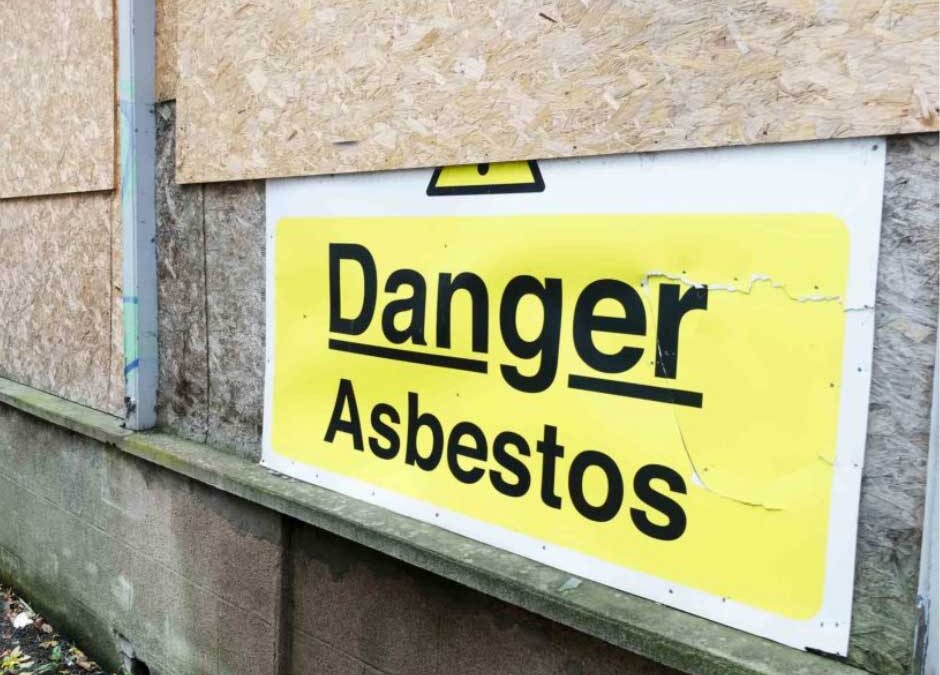1. Introduction
Asbestlint is one of the most overlooked yet potentially hazardous materials found in older buildings and industrial sites. It refers to a form of asbestos-containing tape or insulation wrap that was widely used during the 20th century. Known for its strong heat resistance, fireproof nature, and durability, asbestlint played a significant role in protecting pipes, boilers, and heating systems.
However, despite its usefulness in the past, asbestlint is now recognized as a dangerous substance due to its asbestos content. When damaged or disturbed, it can release microscopic fibers that cause severe health problems. This detailed guide will help you understand what asbestlint is, where it can be found, how to identify it safely, and the proper ways to handle or remove it without risk.
2. What Is Asbestlint?
Asbestlint is a flexible insulation tape made using asbestos fibers. The name comes from combining the words “asbestos” and “lint,” referring to a fibrous, cloth-like material. It was developed to insulate areas exposed to extreme heat, particularly in factories, power plants, and residential heating systems.
The composition of asbestlint usually included chrysotile asbestos (white asbestos), which provided heat insulation and fire resistance. It was manufactured in rolls and applied as a wrap or tape around pipes, ducts, and joints. During the 1950s to 1980s, asbestlint was extremely popular due to its affordability and effectiveness. Unfortunately, it was later discovered that asbestos fibers were highly toxic when inhaled.
To better understand its structure and function, here’s a short overview:
| Feature | Description |
|---|---|
| Material Composition | Asbestos fibers (mainly chrysotile) mixed with binding agents |
| Texture | Cloth-like, flexible, and fibrous |
| Purpose | Heat insulation, fireproofing, sealing joints |
| Common Era of Use | 1950s–1980s |
| Current Status | Banned or restricted in most countries |
Even today, older buildings, industrial machinery, and heating systems may still contain asbestlint if they have not undergone renovation or asbestos removal.
3. Typical Uses and Where It’s Found
Asbestlint was highly valued for its ability to resist heat and fire. It was used across many industries and in domestic construction. You can often find it in the following places:
- Pipe Insulation: Wrapped around hot water or steam pipes to prevent heat loss.
- Boilers and Furnaces: Used to insulate and seal joints exposed to high temperatures.
- HVAC Systems: Found as wrapping or sealing tape around ducts and vents.
- Industrial Equipment: Used in factories to insulate machinery and exhaust systems.
- Older Buildings: Especially those built before the 1980s, where asbestlint was common in maintenance areas or basements.
Here’s a clear summary table:
| Area | Description | Risk Level |
|---|---|---|
| Steam or hot water pipes | Wrapped with heat-resistant asbestos tape | High |
| HVAC ducts and vents | Insulated with fibrous white tape | Medium |
| Boilers and furnaces | Sealed with asbestlint for fireproofing | High |
| Industrial machinery | Applied to reduce heat transfer | Medium |
| Home basements or utility rooms | Old insulation or pipe wrap | Variable |
If you own or manage a property built before 1985, there’s a strong chance that asbestlint might be present.
4. Health Risks of Asbestlint
The main danger of asbestlint lies in the asbestos fibers it contains. When disturbed, these fibers become airborne and can easily be inhaled. Once inside the lungs, they can stay there for decades, leading to life-threatening diseases such as:
- Asbestosis: A chronic lung disease that causes scarring of lung tissue.
- Mesothelioma: A rare and aggressive cancer of the lining of the lungs or abdomen.
- Lung Cancer: Long-term asbestos exposure significantly increases lung cancer risk.
- Pleural Thickening: Thickening of lung membranes that causes breathing difficulty.
Even small amounts of asbestos exposure can be harmful, especially over long periods. The symptoms may take 10 to 40 years to appear, making early detection and prevention extremely important.
5. How to Identify Asbestlint
Identifying asbestlint requires caution. It often looks like ordinary white or grey fabric tape wrapped around pipes or ducts. However, it’s dangerous to touch or disturb suspected materials.
To identify asbestlint safely, follow these steps:
- Check the Building Age: Properties built before the mid-1980s are more likely to contain asbestos-based materials.
- Visual Observation: Look for cloth-like, frayed white or grey tape around pipes, vents, or heating systems.
- Avoid DIY Testing: Do not scrape, cut, or remove samples yourself — this can release fibers.
- Hire a Professional: Certified asbestos inspectors can safely collect samples and test them in a laboratory.
- Assess the Condition: If the tape is intact, it poses less risk. If it’s brittle or deteriorating, removal or encapsulation may be required.
6. Managing and Removing Asbestlint Safely
Once asbestlint is identified, proper management is crucial. There are two safe approaches — encapsulation or removal.
- Encapsulation means sealing the material with a protective coating so fibers can’t escape. This is suitable when the material is stable and undamaged.
- Removal is necessary if the material is deteriorated or in an area where it may be disturbed.
When handling or removing asbestlint, it is vital to follow safety rules:
- Restrict Access: Keep people away from the affected area.
- Use Professional Services: Only licensed asbestos removal contractors should handle it.
- Wear Protective Equipment: Respirators, disposable gloves, coveralls, and safety glasses are mandatory.
- Containment: The area should be sealed off, and HEPA filters used for ventilation.
- Disposal: Waste must be placed in sealed, labeled bags and disposed of at authorized hazardous waste facilities.
Never attempt to remove asbestlint yourself—it’s both dangerous and illegal in many countries.
7. Modern Alternatives to Asbestlint
Thanks to technological advances, there are now safer, asbestos-free materials that serve the same purpose. These modern alternatives are non-toxic and just as effective. Some common options include:
| Modern Material | Features | Common Use |
|---|---|---|
| Fiberglass Tape | Non-toxic, heat resistant | Pipe and duct insulation |
| Ceramic Fiber Tape | Withstands very high temperatures | Industrial insulation |
| Silicone-Coated Tape | Flexible and durable | Electrical or heat insulation |
| Basalt Fiber Tape | Eco-friendly and strong | High-temperature applications |
Switching to these materials ensures safety without compromising performance.
8. Asbestlint Regulations in Pakistan
In Pakistan, asbestos use has been gradually restricted, but old buildings and factories may still contain asbestos materials like asbestlint. Although there isn’t yet a nationwide ban, environmental agencies are raising awareness about its dangers.
If you suspect asbestos in your property:
- Contact your local Environmental Protection Department (EPD).
- Hire certified asbestos removal professionals—especially if you’re in Punjab or Sindh regions.
- Follow proper waste disposal regulations and avoid disturbing old insulation during renovation projects.
By staying informed and working with professionals, you can prevent serious health risks associated with asbestlint.
9. Case Example: Discovering Asbestlint in an Old Factory
Imagine a factory owner discovers white tape wrapped around old steam pipes during renovation. On inspection, it’s identified as asbestlint. Instead of removing it themselves, they contact licensed asbestos experts who seal off the area, safely remove the material, and dispose of it properly.
This simple decision not only protects workers but also prevents asbestos contamination across the facility. It’s a perfect example of how proper awareness and professional help can make a huge difference.
10. What To Do If You Suspect Asbestlint
Here’s a quick action checklist:
- Do not touch or disturb the material.
- Contact a professional asbestos inspector.
- Document the location and condition.
- Follow recommendations — either encapsulate or remove.
- Ensure safe disposal through authorized facilities.
Acting early can prevent health hazards and save significant future costs.
11. Conclusion
Asbestlint is a reminder of how something once considered beneficial can later prove dangerous. While it served as a valuable insulation material for decades, its hidden health risks make it a serious concern today. Knowing how to identify, manage, and remove asbestlint safely is essential for homeowners, builders, and industrial workers.
Other Articles
Understanding Antarvwsna – The Hidden Desire Within
HMS Photovoltaik – Complete Solar Power Solutions by HMS Umwelttechnik GmbH











Leave a Reply